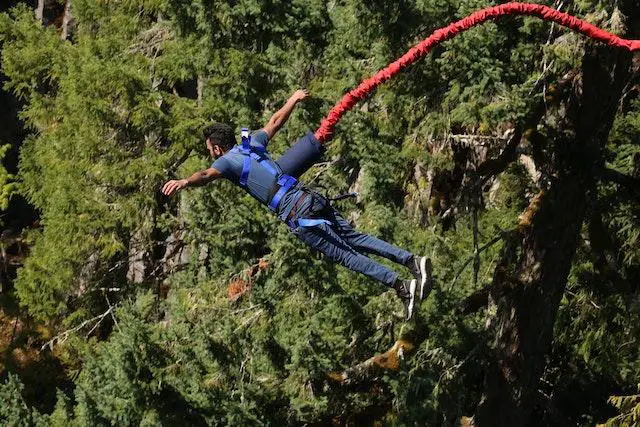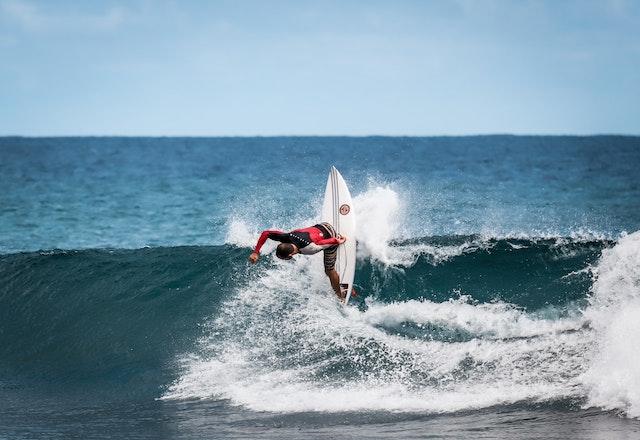
Adrenaline addiction is a condition characterized by an uncontrollable craving for intense, thrilling sensations.
Whether it’s skydiving, bungee jumping, or racing to the finish line, those with an adrenaline addiction are constantly seeking out the next thrill.
While these activities may be exciting in the short term, they can have serious consequences in the long term.
With the right treatment and support, you can overcome your addiction and lead a happy, fulfilling life free from the grip of adrenaline.
Can you be addicted to adrenaline?
Yes, it is possible to become addicted to the adrenaline rush that comes with engaging in exciting, thrilling activities.
This condition is often referred to as an “adrenaline addiction” or an “adrenaline junkie” and is characterized by an uncontrollable craving for intense sensations.
Some of the most common activities associated with this addiction include
- Skydiving
- Bungee jumping
- High-speed racing.
While these activities may seem exciting in the short term, they can have serious consequences in the long term.
They often lead to injuries, accidents, and other negative outcomes that can affect physical health, finances, and quality of life.
What are the symptoms of adrenaline addiction?

The main symptoms of an adrenaline addiction include:
Intense cravings for thrilling experiences
People with an adrenaline addiction experience intense cravings for thrilling, high-adrenaline experiences.
These cravings may be driven by a need to escape or avoid negative feelings, such as stress, anxiety, or depression.
They may also be motivated by a desire to improve self-esteem or feel more alive and energized.
Heightened sense of excitement and euphoria when engaging in such activities
People with an adrenaline addiction often experience a heightened sense of excitement and euphoria when engaging in high-adrenaline activities like skydiving, bungee jumping, or racing.
This sensation is driven by the release of dopamine, a neurotransmitter associated with pleasure and reward-seeking behavior.
While this rush of excitement may feel good at the moment, it can lead to long-term health problems, including an increased risk of injury and accidents or a tendency to take unnecessary risks.
Controlling urges to engage in dangerous behaviors
People with an adrenaline addiction can experience a powerful urge to engage in dangerous behaviors, such as skydiving, bungee jumping, or high-speed racing.
These urges may be driven by several different factors, including the desire to escape negative emotions or improve self-esteem.
While the intense rush of excitement and euphoria that comes with these behaviors may feel good in the short term, it can have serious negative consequences for physical health, finances, and overall quality of life.
Depression or anxiety when not able to experience the thrill of these activities
People with an adrenaline addiction may experience depression or anxiety when they are unable to engage in their favorite high-adrenaline activities.
This is often driven by the need for a constant source of excitement and the feelings of euphoria that come with these thrilling experiences.
However, this lack of stimulation can have negative consequences for physical health, finances, and overall quality of life, as people with an adrenaline addiction may be more likely to take risks and engage in dangerous behaviors.
Compulsive behavior to obtain the desired rush of adrenaline
Compulsive behavior is a common symptom of adrenaline addiction or an uncontrollable craving for the intense rush of adrenaline that comes with engaging in high-adrenaline activities.
This compulsive behavior may manifest as a need to seek out these experiences at all costs, regardless of the risks or consequences involved.
People with this addiction will often take unnecessary risks or engage in dangerous behaviors to obtain the desired rush of adrenaline.
They may also experience depression or anxiety when they cannot engage in their favorite high-adrenaline activities, which can further drive their compulsive behavior.
How do I stop adrenaline addiction?

There is no single “cure” for adrenaline addiction, as the causes and symptoms vary from person to person.
However, some common strategies that may help you manage your cravings and reduce compulsive behavior include:
Identifying and acknowledging the underlying causes of your adrenaline addiction.
One of the key steps in managing an adrenaline addiction is identifying and acknowledging the underlying causes of your cravings.
This may include things like stress, anxiety, or depression, as well as other external or environmental factors that contribute to your sense of excitement and euphoria when engaging in high-adrenaline activities.
Seeking professional counseling or therapy.
If you are struggling with an adrenaline addiction, one of the best ways to manage your cravings and stop compulsive behavior is to seek professional counseling or therapy.
This can involve working with a therapist or counselor who can help you identify and address any underlying mental health issues that may be contributing to your addiction.
Some common mental health conditions that may be linked to adrenaline addiction include depression, anxiety, and trauma-related disorders.
Working with a therapist or counselor can help you develop strategies and techniques for managing your cravings and reducing compulsive behavior.
In addition, they can provide support and guidance as you work through the challenges associated with overcoming an adrenaline addiction.
Avoiding situations or triggers that may promote compulsive behavior.
To overcome an adrenaline addiction, it is important to avoid situations or triggers that may promote compulsive behavior.
This may mean avoiding high-adrenaline activities or environments, such as extreme sports, thrill-seeking hobbies, or other intense physical and mental challenges.
Additionally, it may be helpful to seek professional counseling or therapy to address any underlying mental health issues contributing to your compulsive behavior.
Practicing self-care activities.
This can help you manage your adrenaline cravings and reduce compulsive behavior. Self-care activities such as:
- Meditation
- Journaling
- Exercise may provide stress relief
- Promote relaxation and calmness in the mind and body
- Improve overall mental health.
Practicing these self-care strategies on a daily basis may also help you better cope with stressful situations or triggers that may lead to an adrenaline addiction.
Additionally, engaging in regular physical activity can help relieve tension and stress while improving energy levels and overall health.
Engaging in healthy habits.
To overcome an adrenaline addiction, it is important to engage in healthy habits like getting enough sleep and eating a balanced diet.
This can help you better manage your cravings and reduce compulsive behavior by promoting physical and emotional wellness.
Final thought
If you are struggling with an adrenaline addiction, there are many strategies that can help you manage your cravings and deal with compulsive behavior.
These may include identifying and addressing any underlying mental health issues, seeking professional counseling or therapy, avoiding situations or triggers that promote compulsive behavior, practicing self-care activities such as meditation and exercise, and engaging in healthy habits like getting enough sleep and eating a balanced diet.
With time and commitment, it is possible to overcome an adrenaline addiction and regain control of your life.



